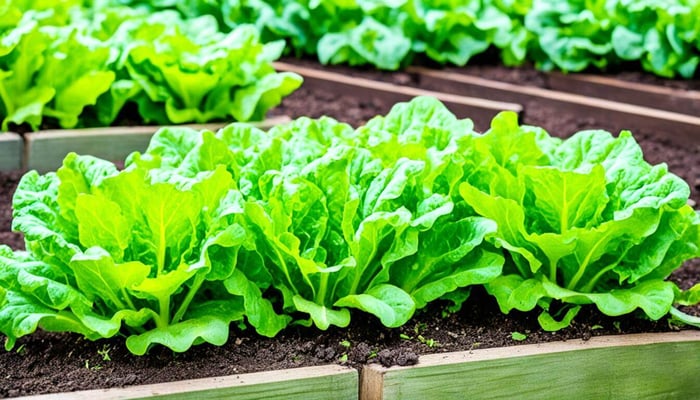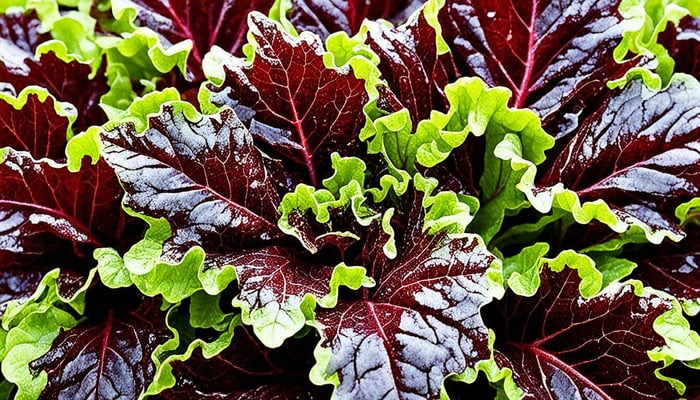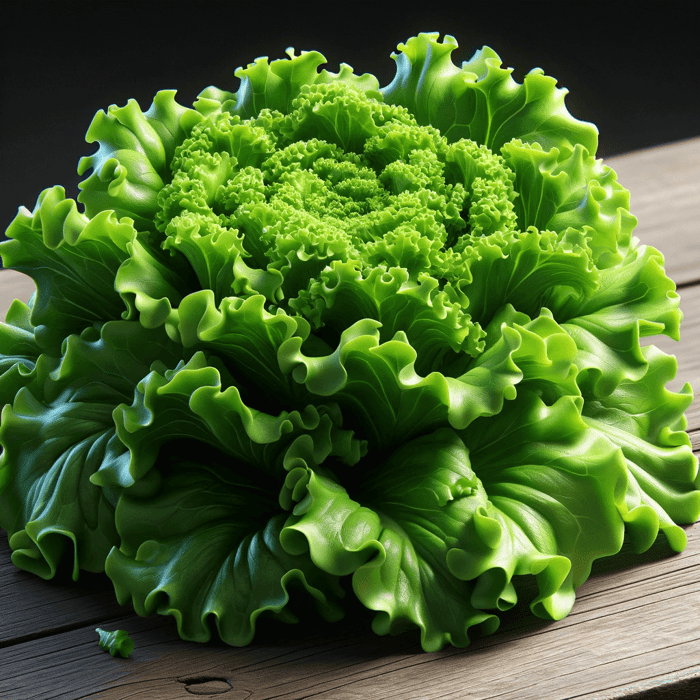Did you know that, despite comprising about 13% of the world's vegetable production, leaf lettuces like Grand Rapids TBR are often overlooked in home gardens? As someone who has seen the rapid transformation from tiny seeds to lush green leaves, I can share that learning how to grow Grand Rapids TBR Lettuce from seed is an adventure worth undertaking. This lettuce seed variety thrives in full sun to partial shade and revels in the crisp, cool weather. Its loose-leaf texture and resistance to common nuisances such as tip burn make it a gardener's ally.
As a Lactuca sativa cultivar, Grand Rapids TBR lettuce seeds stands out with its vibrant green leaves and open-pollinated nature, allowing for seeds that recreate the parent plant's attributes. Furthermore, this hardy green is notably resistant to heat, ensuring it can grace our tables even when the summer turns up the thermostat. For me, there's nothing quite like the experience of a harvest in the morning, collecting the freshest lettuce leaves when they are at their peak of flavor. Join me on this green journey, and let's sow the seeds of success together.
Key Takeaways
- Grand Rapids TBR lettuce is part of the world's significant leaf lettuce production and is well-suited for home gardens.
- Try sowing seeds in cool weather conditions for optimal growth of Grand Rapids TBR's light green leaves.
- The loose leaf texture and tip burn resistance offer a hassle-free gardening experience.
- This heat-resistant and open-pollinated variety allows for consistent Grand Rapids TBR lettuce cultivation.
- Aim to harvest in the morning for the best taste, when the lettuce's green leaves are most flavorful.
Grand Rapids TBR Lettuce Seeds Basics
- Days till maturity: The specific days till maturity can vary, but typically, lettuce reaches maturity in about 50-85 days, depending on the variety and growing conditions.
- Planting depth: Lettuce seeds should be planted at a shallow depth, about 1/8 to 1/4 inch deep.
- Plant spacing: Space lettuce plants about 12 to 18 inches apart in rows 18 to 30 inches apart.
- Days to germination: Lettuce seeds typically germinate in 7 to 10 days under ideal conditions.
- Indoors or Direct Sown: Lettuce can be started indoors or directly sown into the garden. Starting indoors can give you a head start in cooler climates.
- Full Sun or Partial Shade: Lettuce prefers full sun to partial shade, requiring at least 4 hours of sunlight per day, but it appreciates some shade in hotter climates.
- When to harvest: Harvest lettuce when it's full-size but before it bolts (starts to flower), which usually happens when the temperatures get too high.
- How tall does the plant get? Lettuce plants can grow up to 6 to 12 inches tall, depending on the variety.
- How wide does the plant get? The width of a lettuce plant can also vary, generally reaching up to 6 to 12 inches across.
- Native: Lettuce is native to the eastern Mediterranean region and western Asia.
- Family: Lettuce is a member of the Asteraceae family of asters, daisies, and sunflowers.
Grand Rapids TBR Lettuce Seeds
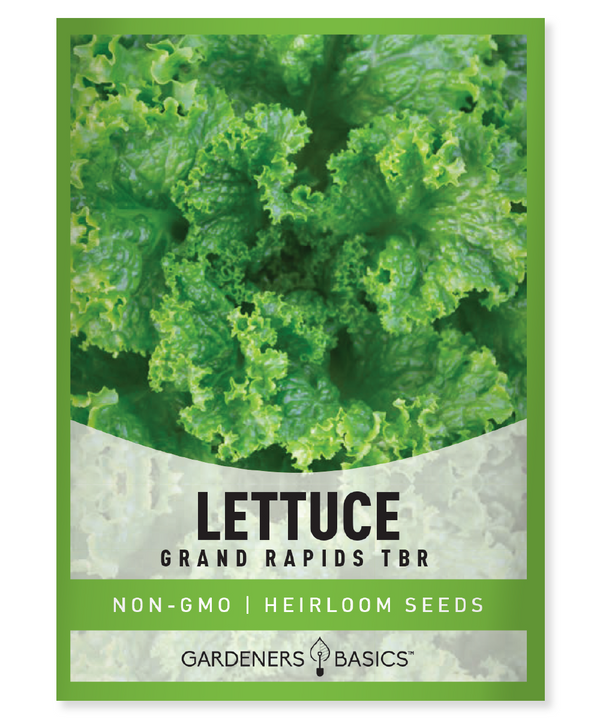
$2.49
Grand Rapids TBR Lettuce Seeds – Crisp, Fast-Growing Heirloom Lettuce for Gardens and Containers Grand Rapids TBR Lettuce seeds are the perfect choice for gardeners seeking a fast-growing, flavorful, and reliable leaf lettuce variety. This heirloom lettuce is prized for… read more
Preparing for Planting
When you're as passionate about growing your own food as I am, every step in the process is filled with anticipation and purpose. And none more so than the critical stage of preparing for planting. For those eager to grow Grand Rapids TBR Lettuce from seed, I'm thrilled to share the insights from my green-thumb experiences.
Selecting Quality Lettuce Seeds from Gardeners Basics
Getting the right start is essential, so give us here at Gardeners Basics a try. The meticulous selection process ensures that each Grand Rapids TBR lettuce seed has the potential to flourish under my care. Let's look at what makes these seeds stand above the rest:
| Gardeners Basics Lettuce Seed Feature | Benefit for Growing Grand Rapids TBR Lettuce |
|---|---|
| Open pollination | Ensures seeds that remain true to the parent plant's characteristics |
| Resistance to common issues | Greater likelihood of a strong, healthy yield |
| Adaptability to environment | Suitable for a wide range of growing conditions |
| Packaging with detailed information | Critical insights into best planting practices for the seeds |
Understanding Soil Temperatures and Conditions
The subtle yet vital nuances of soil temperatures can make or break your lettuce crop. In the quest to grow Grand Rapids TBR Lettuce from seed, monitoring and managing these temperatures, particularly in cooler climates, becomes a high-stakes game. Employing cold frames, for example, can effectively shield your seedlings from extremes, ensuring they benefit from optimal soil temperatures. Guiding you through this step, I'll recount how I adjust conditions to best serve these tender greens, resulting in a harvest that is both bountiful and satisfying.
Choosing the Right Time to Sow Seeds Indoors
Knowing when to take the first step is as important as knowing how. My journey to grow Grand Rapids TBR Lettuce from seed has taught me the value of timing, particularly when commencing indoors. The cool embrace of early spring or the tail end of fall provides a prime opportunity to start your seeds, poised for transplantation, just when they yearn for more space to expand. I'll break down the essential timeline and clues provided by mother nature that signal it's time to sow, so your lettuce can thrive from the onset.

Sowing Grand Rapids TBR Lettuce Seeds
The sowing stage is pivotal when setting out to grow Grand Rapids TBR Lettuce from seed. This variety, with its lush green leaves and loose leaf structure, requires a careful touch. Here's how I go about it, ensuring each seed can develop into a robust plant resistant to heat and the elements.
To sow seeds, start with well-prepared soil in a sunny location – a critical step in effectively growing Grand Rapids TBR Lettuce from seed. Simply broadcast the seeds over the soil's surface, striving for even distribution. The seeds need light to germinate, so cover the seed sparingly with a fine layer of soil, no more than 1/8 inch deep. Next, gently firm the soil with the back of a rake or your hand.
After sowing, water the area with a fine mist to moisten the seeds without displacing them. A consistent watering schedule in the early stages will contribute to optimal germination. While Grand Rapids TBR is quite resistant to heat, be mindful to keep the soil moist, especially during warm periods.
The table below summarizes the sowing process for those looking for more precise instructions. Follow these guidelines and watch your Grand Rapids TBR Lettuce seeds sprout into full-bodied plants with tender, green leaves, ready to furnish your table with fresh, loose-leaf goodness.
| Step | Instructions |
|---|---|
| Seed Preparation | Ensure seeds are sourced from a reliable supplier for quality assurance. |
| Soil Preparation | Prepare a fine, well-draining soil bed in an area that receives full sun to partial shade. |
| Sowing Seeds | Broadcast seeds evenly across the soil surface. |
| Covering Seeds | Lightly cover the seeds with a thin layer of soil; do not exceed 1/8 inch depth. |
| Watering | Moisten the sown seeds with a fine mist to ensure even germination, taking care not to wash away the seeds. |
| Germination Care | Keep soil consistently moist, especially during hot spells, to support germination. |
In my experience, patience is key. With the proper care and attention to detail throughout the process of how to grow Grand Rapids TBR Lettuce from seed, you'll have a verdant crop of heat-resistant, vivacious lettuce to enjoy.
Caring for Your Lettuce Seedlings
As my Grand Rapids TBR lettuce begins to sprout, I'm reminded that the care I give them in their infancy is just as crucial as the soil they were planted in. The luminous, light green leaves characteristic of this leafy vegetable serve as an early reward for the effort invested. The focus is on ensuring they get the right care to fully mature.
Salad Greens Lettuce Seed Assortment | 10 Variety Pack
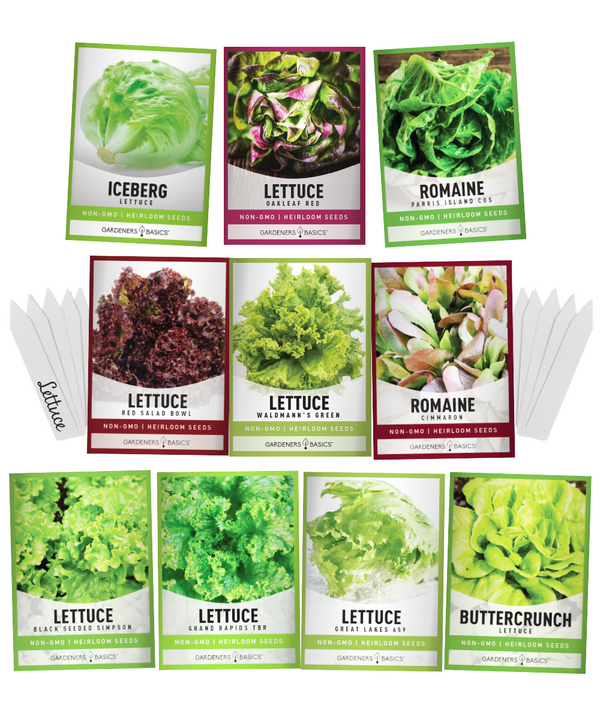
$15.95
Fresh Lettuce Seed Assortment – 10 Heirloom Varieties, Perfect for Hydroponics, Indoor & Outdoor Gardening! Our 10 Salad Greens Lettuce Seeds Variety Pack is the ultimate selection for any home gardener or hydroponics enthusiast! This carefully curated assortment features heirloom, non-hybrid,… read more
Ensuring Adequate Light for Seedlings
Understanding the importance of light for the healthy development of lettuce seedlings is paramount. To successfully grow Grand Rapids TBR Lettuce from seed, it's essential to provide them with plenty of full sun exposure. However, precautions must be taken to shield the delicate seedlings from the harsh midday sun, which could cause stress or wilting. My approach includes strategically placing them where they can enjoy the morning sunlight while being protected during peak sunlight hours.
Managing Water and Nutrients
Cool-weather can greatly affect how your lettuce seedlings absorb water and nutrients. Maintaining a balance is important, providing consistent moisture without waterlogging the soil. To ensure my leafy crops are hydrated, I tend to water them early in the morning, allowing the soil to dry out slightly before the cooler night temperatures set in. Additionally, a light application of a balanced fertilizer provides the essential nutrients to grow Grand Rapids TBR Lettuce from seed into a hearty yield.
Maintaining Optimal Soil Temperatures
I've learned the value of using cold frames to protect my lettuce seedlings' delicate roots and manage optimal soil temperatures in cooler climates. This simple technique creates a microclimate that shields the plant from sudden temperature dips, which can be particularly harmful during the critical growth phases. Monitoring the soil temperature and adjusting coverings allow for a stable environment conducive to Grand Rapids TBR lettuce growth.

Patience and attentiveness will serve as your tools to bring these young plants to their full leaf lettuce potential. With these methods, growing Grand Rapids TBR Lettuce from seed becomes an enriching journey, culminating in the harvest of vibrant, flavorful, and light green lettuce leaves for your culinary enjoyment.
Conclusion - How To Grow Grand Rapids TBR Lettuce From Seed
In wrapping up, I reflect on the growth journey of Grand Rapids TBR Lettuce, from a mere seed to a vibrant plant. Sowing the seeds of knowledge grants us the power to cultivate a garden that nourishes and thrives. As we've explored, the art of successfully growing Grand Rapids TBR Lettuce from seed intertwines with several key practices, from choosing the right sowing time to harvesting techniques that maximize taste and texture.
Summarizing Tips for Successful Growth
Achieving a successful harvest with Grand Rapids TBR Lettuce hinges on our attentiveness to each growth phase. In this journey, we've learned the significance of an early harvest in the morning, seizing the moment when the leaves are crisp and flavorful. Leveraging the strengths of an open-pollinated variety facilitates a more rapid lettuce growth cycle and ensures a uniform quality reminiscent of the parent plant. The magic lies in the details, where consistent care and vigilance yield lush, leafy rewards.
Encouraging Sustainable Gardening Practices
As an advocate for responsible cultivation, I encourage you to embrace sustainable gardening practices that acknowledge our responsibility to the Earth. Growing Grand Rapids TBR Lettuce, or Lactuca sativa, with mindfulness towards sustainability enriches both our environment and our tables. By fostering a connection with the land and employing organic methods, we contribute to the conservation of our ecosystem and partake in the purest form of self-reliance – nurturing and consuming our own grown food.
Lettuce Seed Assortment | 5 Variety Pack
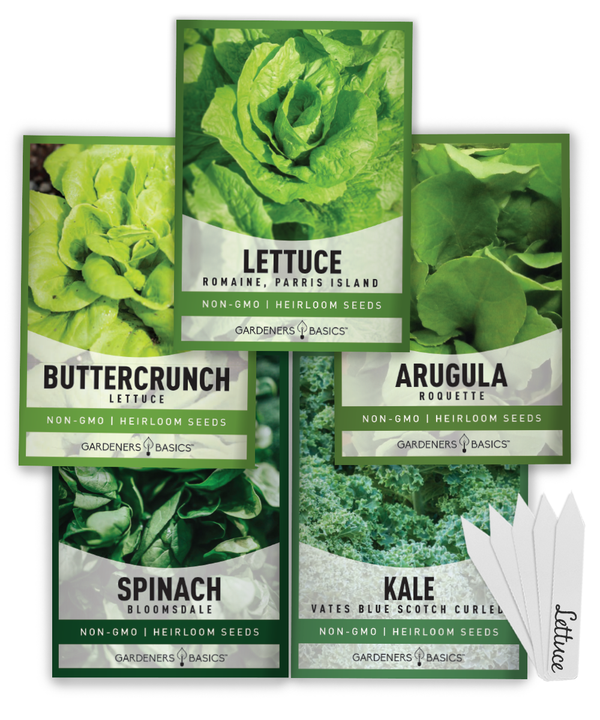
$9.95
Grow Fresh Greens Year-Round with Our 5 Lettuce Seeds Variety Pack - Heirloom, Non-GMO, Perfect for Outdoor & Indoor Gardening Introducing our 5 Lettuce Seeds Variety Pack – the perfect addition to your garden, whether you’re a seasoned grower or… read more
FAQ - Growing Grand Rapids Lettuce
How do I successfully grow Grand Rapids TBR Lettuce from seed?
Start by selecting quality lettuce seeds, preferably from a reputable source like Gardeners Basics. Ensure the soil temperatures are optimal for cool-weather crops, and begin sowing seeds indoors under the right conditions. Once sown, cover the seeds lightly with soil. When seedlings appear, provide adequate light and maintain even moisture and nutrients. Remember that for the best flavor, you should harvest in the morning. Grand Rapids TBR is heat-resistant and open-pollinated, which helps get a rapid and healthy lettuce crop.
What are the ideal soil temperatures for sowing Grand Rapids TBR Lettuce seeds, and how can I maintain them?
Grand Rapids TBR Lettuce prefers cooler soil temperatures to germinate effectively. Aim for soil temperatures between 40°F and 75°F. Cold frames can regulate soil temperature in cooler climates, protecting the seeds from cold snaps and extending the growing season. To maintain these temperatures, monitor the soil regularly and provide insulation during colder periods to keep seed beds warm enough.
When is best to start sowing Grand Rapids TBR Lettuce seeds indoors?
The best time to sow Grand Rapids TBR Lettuce seeds indoors is about 4 to 6 weeks before the last expected frost date. Starting seeds indoors during cooler weather helps to establish healthy seedlings that are ready for transplanting once the threat of frost has passed and soil temperatures are consistently within the optimal range.
How do I care for my Grand Rapids TBR Lettuce seedlings to ensure healthy growth?
To care for Grand Rapids TBR Lettuce seedlings, provide them with sufficient light, which may mean supplementing natural light with grow lights if necessary. Keep the soil evenly moist but not waterlogged, and provide balanced nutrients designed for leafy greens. Maintaining optimal soil temperatures using measures such as cold frames, especially in cooler climates, is crucial.
Can Grand Rapids TBR Lettuce thrive in full sun, and does it require any special attention?
Yes, Grand Rapids TBR Lettuce can thrive in full sun, but it also does well in partial shade, making it versatile for different garden setups. Consider using shade cloths to prevent tip burn and bolting in areas with intense sunlight. Regular watering in the morning can help the leaves to stay crisp, and in extremely hot conditions, opting for a location with afternoon shade may extend the harvesting period.
Are there any particular pests or diseases I should watch out for growing Grand Rapids TBR Lettuce?
Like all lettuces, Grand Rapids TBR Lettuce can be susceptible to common pests such as aphids, slugs, and caterpillars, as well as diseases like downy mildew and powdery mildew. Regular monitoring and good horticultural practices, such as proper spacing and air circulation, can minimize these problems. When needed, use organic pest control methods to manage any infestations.
What sustainability practices can I follow while growing Grand Rapids TBR Lettuce?
Sustainable practices when growing Grand Rapids TBR Lettuce include using organic compost for fertilization, practicing crop rotation, utilizing natural pest control methods, collecting rainwater for irrigation, and saving seeds from your plants for future planting, as this lettuce is open-pollinated. Additionally, consider using mulch to conserve water and reduce weeds in your garden.
How deep should I cover the Grand Rapids TBR Lettuce seeds after sowing?
Grand Rapids TBR Lettuce seeds should be covered lightly with soil, about an eighth to a quarter of an inch deep. A fine sprinkling of soil is enough to protect the seeds while still allowing light to reach them, which aids in germination. Remember not to bury the seeds too deeply, which can impede their growth.
How long does it typically take for Grand Rapids TBR Lettuce to go from seed to harvest?
Grand Rapids TBR Lettuce generally matures quickly and can be ready to harvest within 45 to 55 days from sowing. For a continuous supply, consider sowing seeds every two to three weeks. Remember that younger leaves might be tender and flavorful, so you can begin harvesting a few leaves at a time once they reach a usable size.
Is Grand Rapids TBR Lettuce resistant to heat, and how does that influence growing it in warmer climates?
Grand Rapids TBR Lettuce has better heat resistance than many other lettuce varieties. This trait makes it suitable for growing in climates where temperatures may rise during the growing season. In warmer climates, it's advisable to provide some shade during the hottest part of the day and to ensure the plants are well-watered to keep the soil cool and moist.
Leafy Green Salad Seeds | 8 Variety Pack
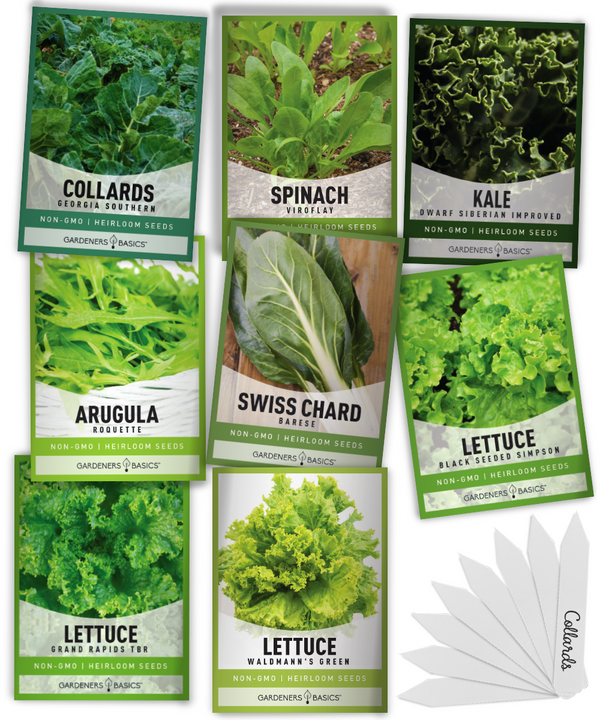
$15.95
Ultimate 8 Leafy Green Salad Seeds Variety Pack for Fresh, Homegrown Salads Introducing our 8 Leafy Green Salad Seeds Variety Pack, perfect for growing fresh, nutrient-dense greens right at home! This carefully curated selection of leafy green seeds includes heirloom,… read more



